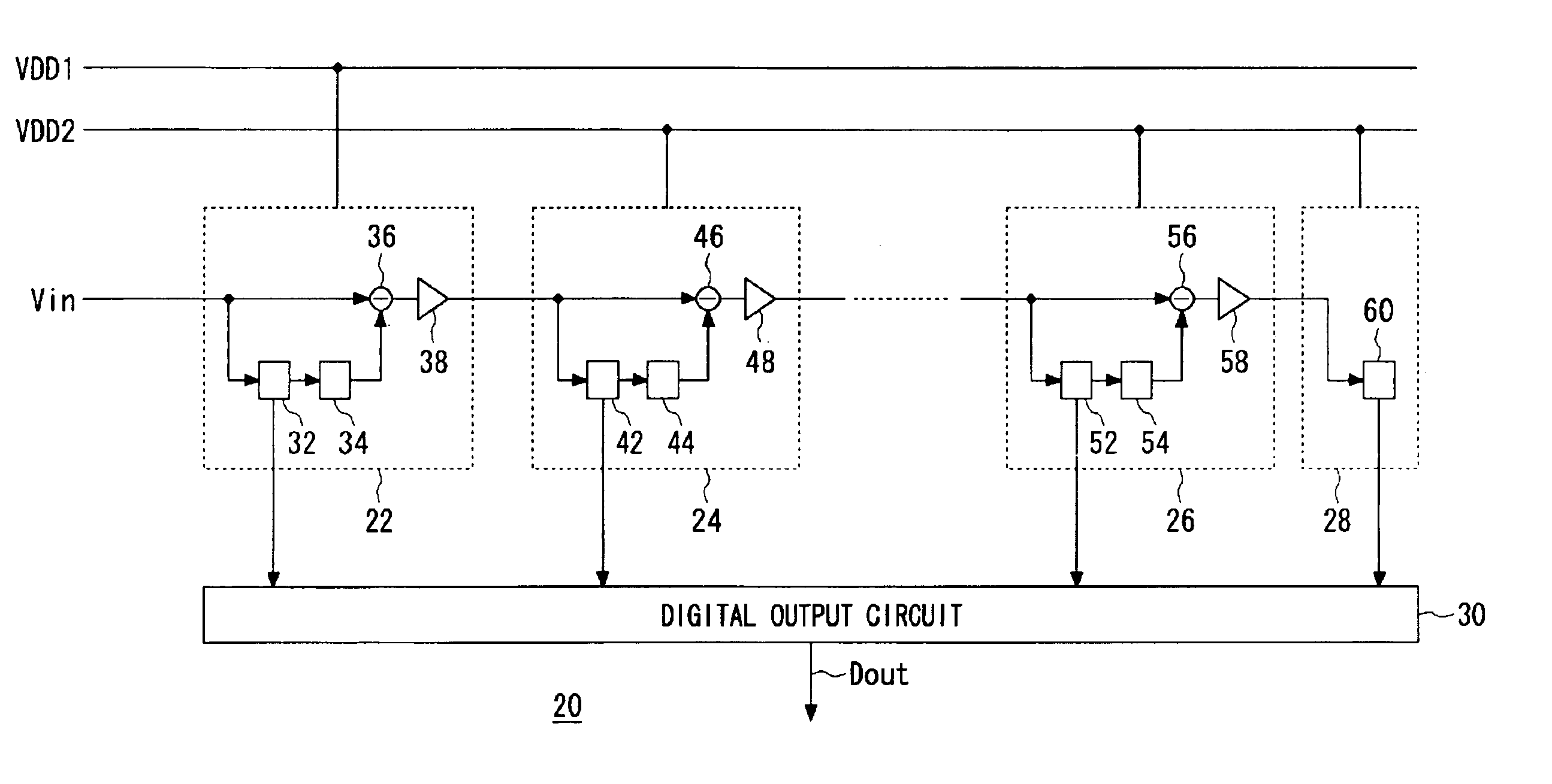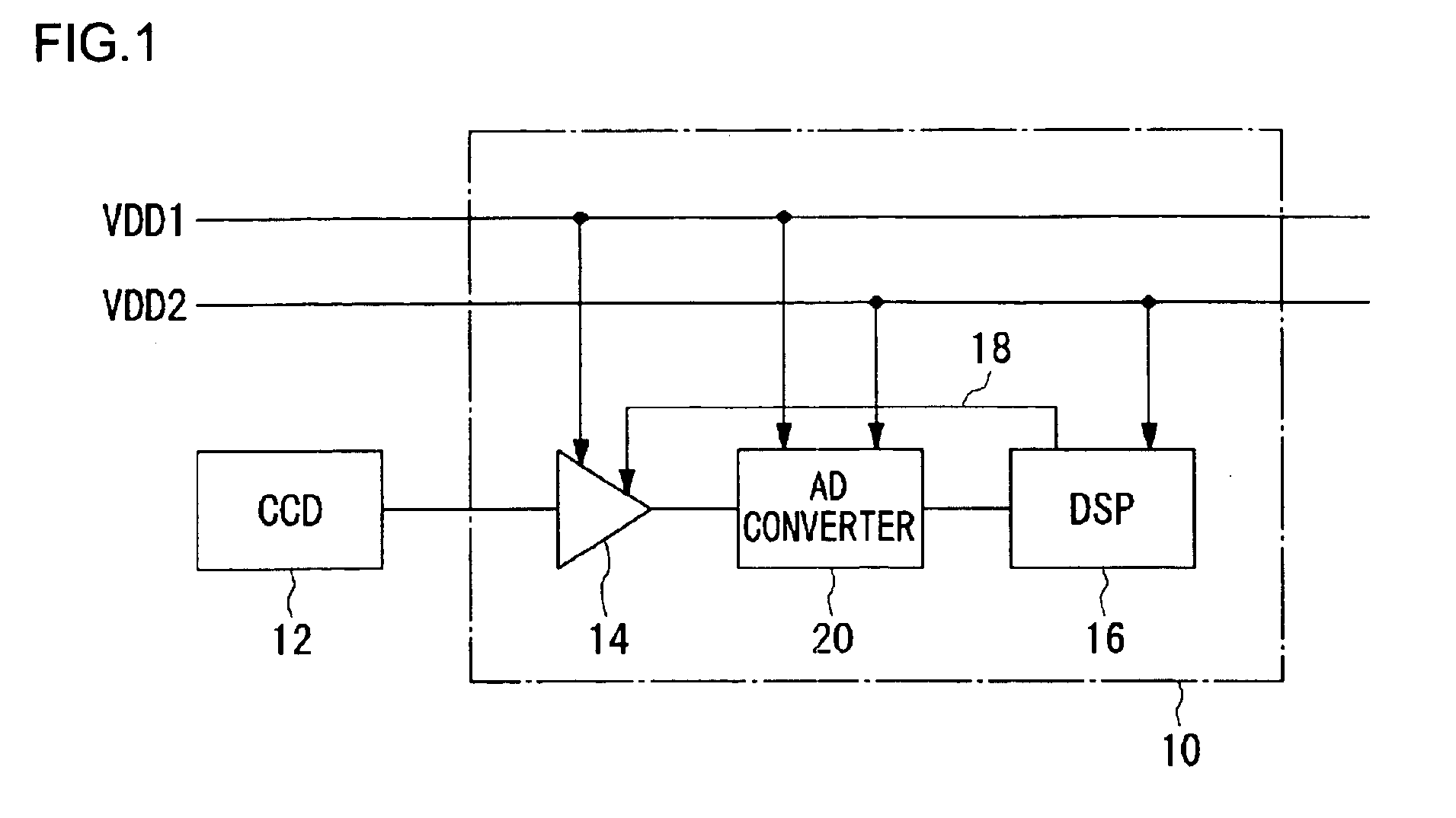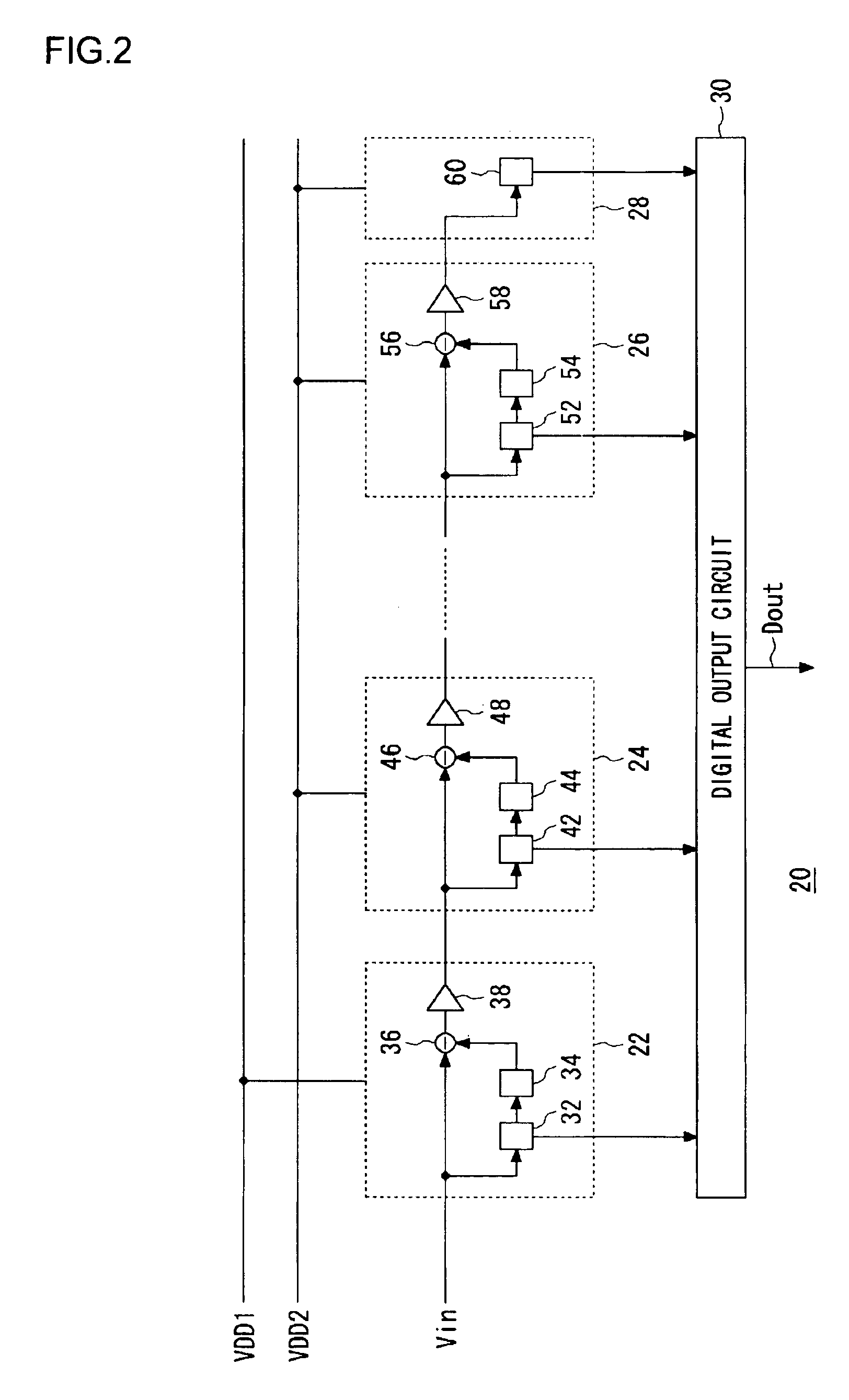Analog-to-digital conversion circuit and image processing circuit for stepwise conversion of a signal through multiple stages of conversion units
an image processing circuit and digital conversion technology, applied in analogue/digital conversion, power saving provisions, instruments, etc., can solve the problems of deterioration in characteristics, increase in size, and decrease in conversion accuracy, so as to avoid deterioration in characteristics, reduce power consumption, and reduce the effect of power consumption
- Summary
- Abstract
- Description
- Claims
- Application Information
AI Technical Summary
Benefits of technology
Problems solved by technology
Method used
Image
Examples
first embodiment
(First Embodiment)
[0022]FIG. 1 shows the basic configuration of an image processing circuit. An image sensor 12 such as CCD (Charge Coupled Device) and a CMOS sensor receives light from a subject to convert the light into an electric signal, which is then supplied to a one-chip LSI (Large Scale Integration) 10. The one-chip LSI 10 incorporates an AGC (Auto Gain Control) 14, an AD converter 20, and a DSP (Digital Signal Processor) 16. The AGC 14 amplifies the electric signal received from the image sensor 12, and the AD converter 20 converts the amplified analog signal into a digital signal, on which the DSP 16 performs compression or other image processing. Part of the output from the DSP 16 is fed back to the AGC 14 via a feedback circuit 18.
[0023]The one-chip LSI 10 is supplied with power from two sources, i.e., a first voltage source VDD1 and a second voltage source VDD2. The first voltage source VDD1 supplies 2.7V and the second voltage source VDD2 supplies 1.2V. Thus, the AGC 1...
second embodiment
(Second Embodiment)
[0031]FIG. 3 shows the configuration of an AD converter 20 according to a second embodiment. The AD converter 20 according to this embodiment is different from that of the first embodiment in that voltages to be supplied to each of multiple stages of conversion units are gradually lowered. Now, the different point will be mainly described below.
[0032]The first conversion unit 22 and the second conversion unit 24 are supplied with a voltage from the first voltage source VDD1 and a voltage from the second voltage source VDD2, respectively. On the other hand, the (n−1)th conversion unit 26 and the nth conversion unit 28 are supplied with a voltage from a third voltage source VDD3 and a voltage from a fourth voltage source VDD4, respectively. The first voltage source VDD1 supplies the highest voltage, while the second voltage source VDD2 supplies the second highest voltage, the third voltage source VDD3 the third highest voltage, and the fourth voltage source VDD4 the...
third embodiment
(Third Embodiment)
[0033]FIG. 4 shows the configuration of an AD converter 20 according to a third embodiment. The AD converter 20 according to this embodiment is different from that of the first and second embodiments in that the second voltage source VDD2 supplies a voltage to all of multiple stages of conversion units. Now, the different point will be mainly described below.
[0034]The AD converter 20 has a voltage step-up unit 82 for stepping up the voltage supplied. The step-up unit 82 steps up the voltage, supplied by the second voltage source VDD2 to the first conversion unit 22, from 1.2V to 2.7V. For example, the step-up unit 82 includes a charge pumping DC-DC converter. In this manner, a higher voltage is supplied only to the first stage or the first conversion unit 22, while a lower voltage is supplied to the second and subsequent stages or the second conversion unit 24 to the nth conversion unit 28, thereby reducing the overall voltage. Correspondingly, as in the first embo...
PUM
 Login to View More
Login to View More Abstract
Description
Claims
Application Information
 Login to View More
Login to View More - R&D
- Intellectual Property
- Life Sciences
- Materials
- Tech Scout
- Unparalleled Data Quality
- Higher Quality Content
- 60% Fewer Hallucinations
Browse by: Latest US Patents, China's latest patents, Technical Efficacy Thesaurus, Application Domain, Technology Topic, Popular Technical Reports.
© 2025 PatSnap. All rights reserved.Legal|Privacy policy|Modern Slavery Act Transparency Statement|Sitemap|About US| Contact US: help@patsnap.com



